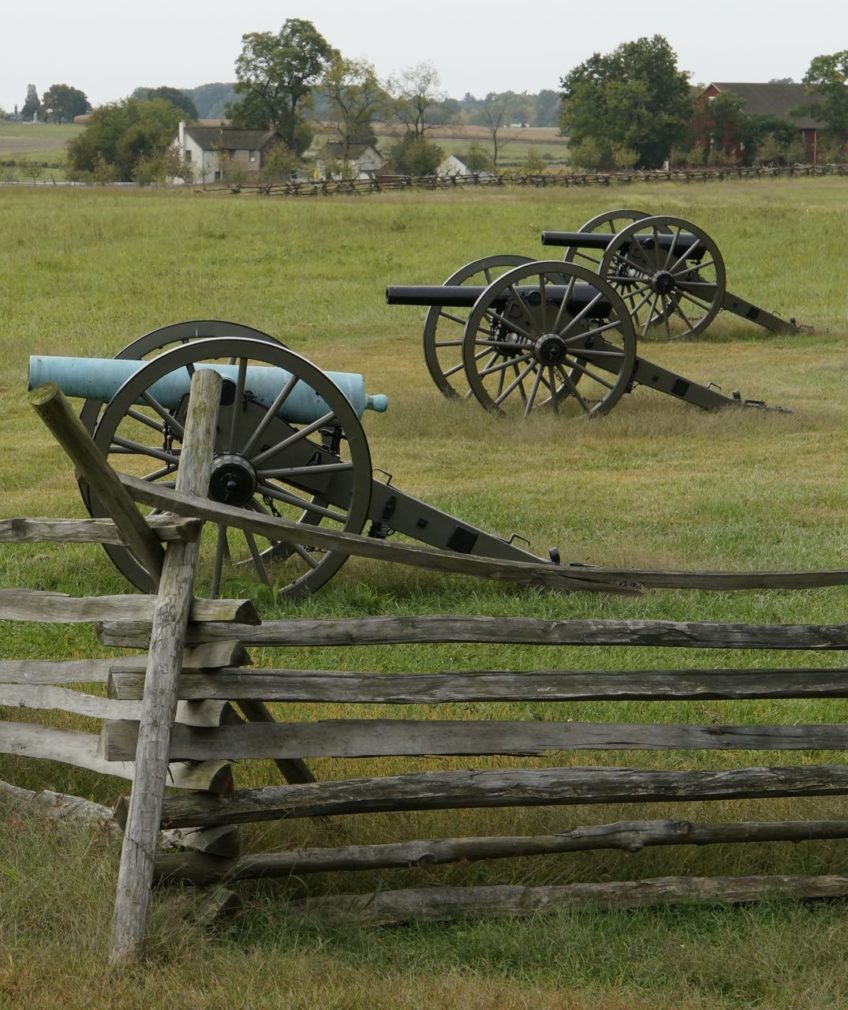In the summer of 2014, I led a bike trip from Amsterdam to Venice. Over the course of four weeks, my group passed through some of the most contested territory of WWI and WWII. The land was pockmarked with the scars of artillery shells and marred by the intersecting indentations of trenches. Even though I didn’t necessarily have the time or energy to fully appreciate or understand it then, it made an obvious impression. Men and women died in those places, by the hundreds, by the thousands. The savagery of war had imprinted itself on the landscapes. I realized then that I hadn’t experienced the places in the United States that have that type of history. The first century of our existence as a country was tumultuous and violent, but the United States bears few scars from the wars of the 20th century. We lost hundreds of thousands of men, but the memory of their loss is not apparent in our fields and valleys as it is in Europe.

The strife of our own Civil War, however, is still visible in certain sections of the United States and has an ever-apparent role in our culture and politics of which we are increasingly aware. Despite being relatively well traveled in the Northeast, sections of the West, and the Midwest, none of these areas saw the carnage of the Mid-Atlantic region or the South. Now, I found myself in one of the most contentious areas of the Civil War. Here, General Robert E. Lee and the Army of Northern Virginia had pushed north first in 1862 and later in 1863 with hopes of engaging the Union forces beyond the Potomac River. These offensive expeditions eventually proved ineffective, but not before tens of thousands of Americans had died. The battle of Gettysburg marks the northernmost offensive of the Confederacy during the Civil War. Never again would they extend their reach as far as they did on July 3, 1863 at the Angle on Cemetery Ridge. Those three days of savage fighting will forever serve as poignant reminders of the destruction that a divided nation can generate.

As I left Philadelphia behind, I headed due west for what felt like the first time on my trip. Driving into the sunset, I arrived at Gettysburg as the muted moon forced its way through the dense cloud cover. As an adolescent, I had been obsessed with the Civil War. My passion for military history began when my family watched the 12-hour Ken Burns’ documentary. I then read The Killer Angels and The Red Badge of Courage and watched films like Gettysburg, Glory, Gods and Generals, among many others. I was hooked. After my dad visited Gettysburg, he returned with a wool cap reminiscent of the style that drummer boys and young recruits might have worn. That October, I dressed as a Union soldier for Halloween. Despite my obsession, I had never visited any of the battlefields.

Early on Tuesday, I woke up and headed straight for the Gettysburg National Military Park Visitor Center. Instantly, I realized that this was the first federal park where I felt out of place. Acadia and Cuyahoga had been filled with young families and intrepid adventurers. This visitor center, on the other hand, was full of aging couples. From their dress or headwear, it was obvious that the vast majority were veterans of the Korean or Vietnam Wars. The stark difference between the park goers here and those in other parks may have been a function of my timing, as the school year had already started, but I suspected that places like Gettysburg really only appeal to a certain clientele. Sharing the field with those men and women, however, only deepened my appreciation for the fields of Gettysburg. My continued enthusiasm with the Civil War seemed to be somewhat atypical, which worried me. The Civil War cannot be forgotten or its importance belittled.
As I’ve found with many expansive historical sites, Gettysburg is best explored via the auto road that winds its way past the most important places. The quiet, slow road is lined with memorials to each regiment involved in the events of July 1-3, 1863. The plaques outline the history of those men and their role in the battle. Among the plaques are larger monuments to the “Sons of Alabama” on the western side or the “Sons of Vermont” on the eastern side who lost their lives at Gettysburg. The monuments that line mile after mile of road cannot help but overwhelm you with the gravity of the manpower involved in this battle. It is almost impossible to imagine these Pennsylvania hills and fields teeming with 150,000 men preparing for battle, but the plaques and statues tell that story.



I didn’t really know how I would feel when I visited places like Seminary Ridge, Little Round Top, Devil’s Den, the Wheatfield, and Cemetery Ridge. To me, these places represent the most crucial advances and retreats of the battle. As I looked from Seminary Ridge towards Cemetery Ridge, I could only imagine how a Confederate soldier must have felt as he was ordered to march the ¾ of a mile into open fields exploding with Union fire. As over 12,000 Confederates stepped out of the tree line, the Union soldiers must have beheld a gut wrenching sight. The boulders of Little Round Top and Devil’s Den paid homage to the horrific fighting that happened here. The terror that soldiers must have felt as they pressed forward through the Wheatfield seems truly unimaginable. Gettysburg is a horrifically beautiful place.




In the end, I couldn’t help but succumb to the power of this places. This hallowed ground saw thousands of young men die and tens of thousands wounded. The landscape tells their story better than any book or film ever will. It is a place that must be experienced to be understood.



2 Responses
Jean Cronon
Your very descriptive images tell about this, one of the worst of all the encounters of the Civil War. My visit to this place was with Dave so he told me the sad history. Many Wisconsin men were recruited and/or enlisted including members of the Cronon family. Their remains are in the cemetery in La Cross. We visited that cemetery every time we went there to visit the family.
Susan Fey
Beautiful, moving description. There is something especially poignant about you, at 24, imagining the reality of this.